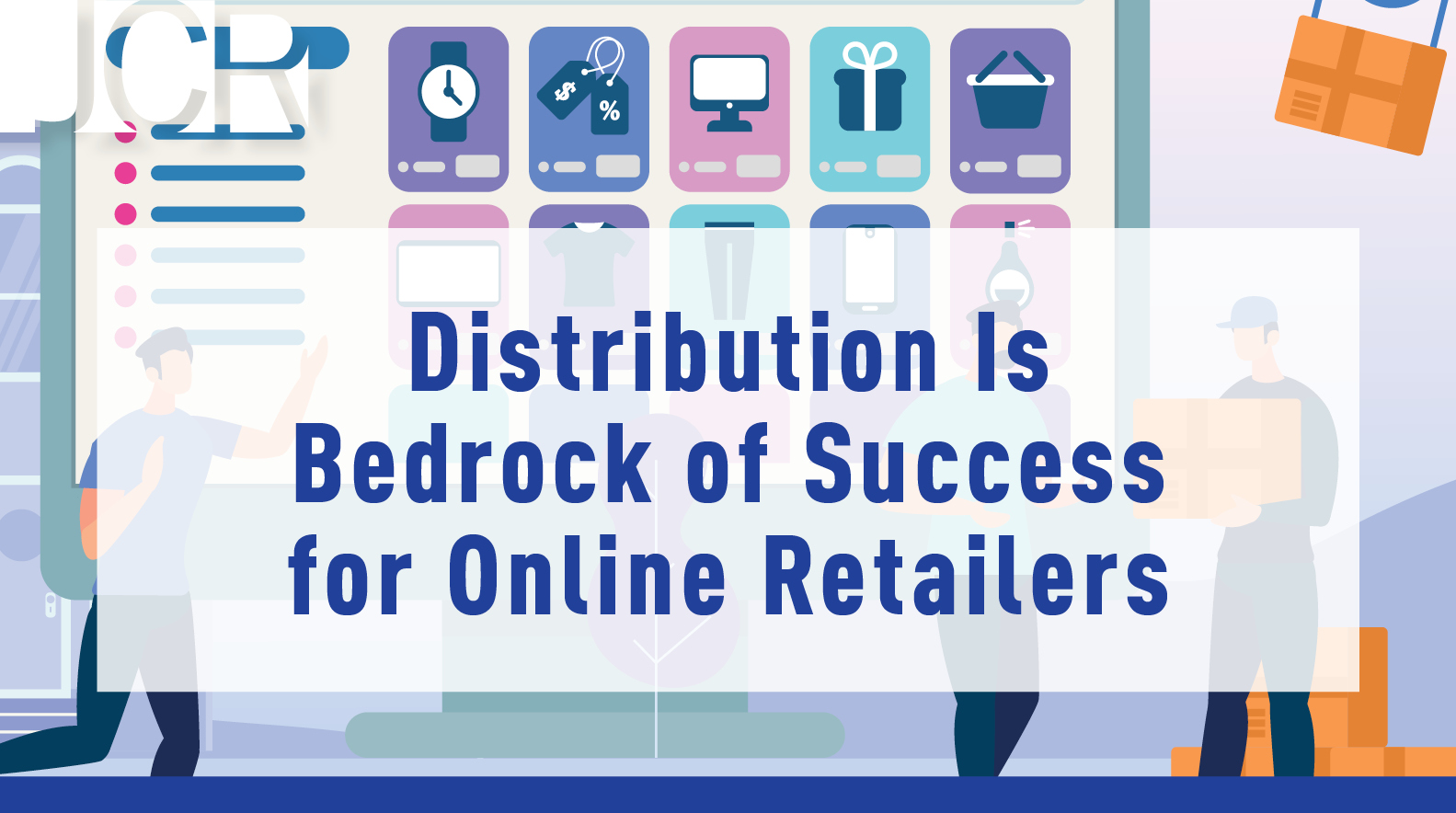Distribution Is Bedrock of Success for Online Retailers
By Keith Chulumovich, Managing Director & Matthew Rizzo, Director
As published in TMA’s Journal of Corporate Renewal
E-commerce has become a disruptive force in both the retail and distribution sectors. It has significantly impacted consumer buying habits as well as distribution networks and technology platforms. For the consumer, most of these disruptions have been positive.
E-commerce was made possible in 1991, when the internet was opened to commercial use. Since then, one would be hard pressed to find a business that hasn’t taken up residence on the web. In 2019, retail e-commerce sales worldwide amounted to $3.53 trillion, and e-retail revenues are projected to nearly double, to $6.54 trillion, in 2022. Purchasing all manner of goods and services has become increasingly seamless due to this online sensation, which blossomed from a single transaction in the early ‘90s to the vast marketplace it is today. This article explores the impact of this changing distribution network on today’s retail strategy.
E-commerce has grown so large and diverse that consumers can purchase virtually anything and have it delivered directly to them with a click of a button or swipe on an app without ever leaving their houses. This convenience has also spilled over into groceries and food delivery, well beyond the local pizza delivery all are familiar with.
This phenomenon is often referred to as the Amazon Effect, whereby consumers have grown accustomed to frictionless commerce; low-cost or free, fast delivery; real-time tracking of products; easy returns; access to an infinite selection of products; and in many cases, the ability to customize products they order. These expectations are also reaching beyond the retail industry, as more and more manufacturers and distributors are selling directly to the end consumer.
The impact of all this convenience is the shifting of supply chain costs and the race for effective and efficient distribution networks that have grown progressively more complex to meet consumer demand and expectations.
Traditionally, businesses passed along the cost of delivering their products to customers either at cost or a small margin. Today, these distribution networks are no longer viewed as profit centers but rather as a means to capture market share. This change is shifting costs within the supply chain, moving away from brick and mortar and toward distribution. This shift is driven in part by changing consumer expectations whereby purchasing convenience is creating brand loyalty.
Distribution is a very broad term that encompasses multiple businesses or intermediaries within a supply chain. This supply chain consists of wholesalers, retailers, distributors, and the internet. Distributors include warehouse consolidation centers as well as freight carriers (air and surface) and local last mile delivery businesses. The part of this supply chain that has been growing the fastest is the local last mile delivery businesses, or the couriers and local delivery services industry.¹ The couriers and local delivery services industry is greatly impacted by e-commerce, which has had a profound effect on consumers’ expectations.
Many articles have spoken exhaustively about the death of brick and mortar, but companies that have embraced the online sales model have either lowered costs by avoiding additional expenses associated with traditional brick-and-mortar locations or increased revenues by adding an online presence. Supply chain cost savings, higher sales volumes, and negotiated vendor price reductions have resulted in a more cost-efficient model and, ultimately, better deals for the consumer.
Consumers are indeed purchasing more and more goods online. U.S. online retail sales as a percentage of total U.S. retail sales are increasing at a compounded annual growth rate of approximately 10%.
Strategic Considerations
All eyes are on Amazon as it ramps up its own branded delivery. Amazon and FedEx earlier this year terminated two major shipping contracts due to Amazon’s newer branded delivery service, which sent FedEx scrambling to sign Amazon competitors like Walmart and Target. It appears that Amazon wants total control of its delivery network, which would, in turn, help the retailer to better control its costs of delivering to customers.
Amazon’s influence on consumer expectations is creating an issue for the entire retail industry from a fulfillment standpoint. Retailers now have to fulfill bulk orders as well as drop ship single orders effectively, efficiently, and, most importantly, quickly. Fully integrated system technologies are paramount within this industry, all due to Amazon.
Amazon’s model is to make up shipping losses through increased sales volume, as stated in its 2018 10-K annual report:
“We expect our cost of shipping to continue to increase to the extent our customers accept and use our shipping offers at an increasing rate, we reduce shipping rates, we use more expensive shipping methods, and we offer additional services. We seek to mitigate costs of shipping over time in part through achieving higher sales volumes, optimizing our fulfillment network, negotiating better terms with our suppliers, and achieving better operating efficiencies. We believe that offering low prices to our customers is fundamental to our future success, and one way we offer lower prices is through shipping offers.”
Companies such as Amazon and Walmart, which offer lost cost or free two-day, one-day, or even same-day delivery, are experiencing tremendous gains in market value and market share as higher top lines offset increasing distribution and delivery costs. Ultimately this is lowering overall product costs and increasing revenues for those businesses that can take advantage of the new retail model.
Traditional retailers that want to compete in this new retail model, especially those that are heavy into brick and mortar, will have to add a fully integrated e-commerce system that includes fulfillment to achieve efficient, effective deliveries. There is still significant interest in in-store shopping, but as demonstrated by research from Statista, preferences for shopping online versus in-store varies by age.² Those who expressed a preference for online shopping included:
• 67% of millennials
• 56% of Gen Xers
• 41% of baby boomers
• 28% of seniors
Many retailers in the marketplace are already attempting to differentiate themselves from Amazon by creating their own niches rather than competing directly with the retail giant. For example, there is a custom online home décor company that works directly with its customers to outfit houses with custom cabinetry, appliances, countertops, etc. The company is essentially bringing custom work to the e-commerce platform.
Differentiation and all-encompassing, fully integrated software systems (accounting, ordering, fulfillment, billing, etc.) will be crucial in determining whether a retailer will be successful in the current environment. One large retailer that has been especially impacted by the Amazon effect recently is GameStop, a large retail video game provider that competes directly with Amazon’s video game division.
What GameStop cannot do is compete with Amazon’s free two-day delivery for Amazon Prime members. GameStop is still committed to online ordering with in-store pickup of video games available in CD format for those who either prefer that format or don’t want to pay for shipping and would like their games quicker. GameStop might fare better if it viewed its remaining brick-and-mortar stores as mini fulfillment centers and utilized small contractors to deliver orders to customers from those stores.
No matter what their current online strategies are, retailers cannot afford to ignore the 5,000-pound elephant in the room. But ultimately, innovation is driven by strong competition. Retailers that are not actively adapting to the new model or creating new approaches to the market may not be around to see the next innovation.
What’s Next?
Cue the Twilight Zone theme music because what’s next for distribution has much to do with unmanned automation in the form of self-piloted drones and self-driving transports. Although both concepts are still in the development phase, these modes of transportation are the epitome of efficiency. Imagine an army of drones delivering packages to customers’ doorsteps within hours of placing their orders or a self-driving semi that is not subject to some U.S. Department of Transportation regulations for driver breaks traveling cross-country in record time, saving the trucking company both time and money.
The public may initially push back on these alien innovations. With their potential for achieving greater efficiencies in the distribution industry worldwide, however, these innovations are likely to become a part of the average consumer’s daily life.
¹ IBIS World Industry Report, “Couriers & Local Delivery Services in the US,” August 2019.
² statista.com/statistics/242512/online-retail-visitors-in-the-us-by-age-group/


